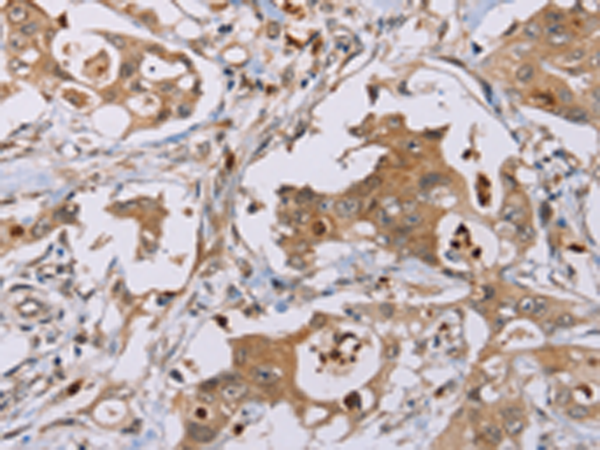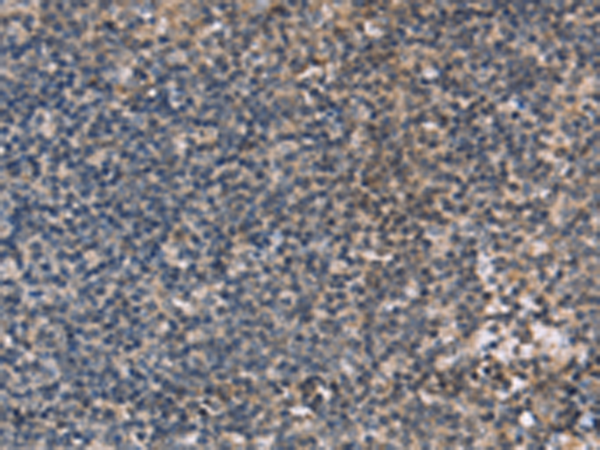


| WB | 1/500-1/2000 | Human,Mouse,Rat |
| IF | 咨询技术 | Human,Mouse,Rat |
| IHC | 1/50-1/200 | Human,Mouse,Rat |
| ICC | 技术咨询 | Human,Mouse,Rat |
| FCM | 咨询技术 | Human,Mouse,Rat |
| Elisa | 1/2000-1/5000 | Human,Mouse,Rat |
| Aliases | OCTD |
| WB Predicted band size | 40 kDa |
| Host/Isotype | Rabbit IgG |
| Antibody Type | Primary antibody |
| Storage | Store at 4°C short term. Aliquot and store at -20°C long term. Avoid freeze/thaw cycles. |
| Species Reactivity | Human, Mouse, Rat |
| Immunogen | Fusion protein of human OTC |
| Formulation | Purified antibody in PBS with 0.05% sodium azide and 50% glycerol. |
+ +
以下是关于OTC(鸟氨酸氨甲酰基转移酶)抗体的3篇代表性文献摘要:
1. **文献名称**:*Monoclonal antibody-based detection of ornithine transcarbamylase deficiency*
**作者**:Tuchman M. et al.
**摘要**:研究开发了一种特异性单克隆抗体,用于检测人类肝细胞中OTC酶的活性缺失,为OTC缺乏症的快速诊断提供免疫学方法支持。
2. **文献名称**:*Immunohistochemical analysis of OTC expression in mouse models of urea cycle disorders*
**作者**:Yudkoff M. & Ahrens K.
**摘要**:通过OTC抗体对基因编辑小鼠肝脏组织进行免疫组化分析,揭示了OTC酶表达水平与尿素循环功能障碍的关联性。
3. **文献名称**:*A novel ELISA assay for quantification of ornithine transcarbamylase using polyclonal antibodies*
**作者**:Lee B. & Singh R.H.
**摘要**:报道了一种基于兔源多克隆抗体的ELISA检测技术,可定量分析血液样本中OTC酶浓度,为新生儿代谢筛查提供新工具。
注:以上文献为领域相关方向示例,实际文献需通过PubMed或Google Scholar等平台检索确认。若需具体文献,建议补充研究背景(如抗体应用场景)以便精准推荐。
OTC antibodies target ornithine transcarbamylase (OTC), a mitochondrial enzyme critical to the urea cycle, which detoxifies ammonia by converting it into urea. As the second enzymatic step in this cycle, OTC catalyzes the reaction between ornithine and carbamoyl phosphate to form citrulline. Inherited deficiencies in OTC, an X-linked disorder, are the most common urea cycle defect, causing hyperammonemia with severe neurological or fatal outcomes if untreated.
OTC antibodies are vital tools in diagnosing and researching this condition. They enable detection of OTC protein levels via techniques like Western blot, immunohistochemistry, or ELISA, helping confirm genetic diagnoses, assess residual enzyme activity, and study tissue-specific expression. In research, these antibodies aid in exploring urea cycle regulation, mitochondrial metabolism, and disease mechanisms. They also support preclinical studies for gene therapies or enzyme replacement strategies.
Commercial OTC antibodies are typically raised in rabbits or mice using recombinant human OTC protein epitopes. Specificity validation (e.g., knockout controls) is essential due to potential cross-reactivity with related proteins. Beyond diagnostics, they contribute to understanding metabolic adaptations in liver diseases, cancer, or drug-induced mitochondrial dysfunction, highlighting OTC's broader pathophysiological roles.
×